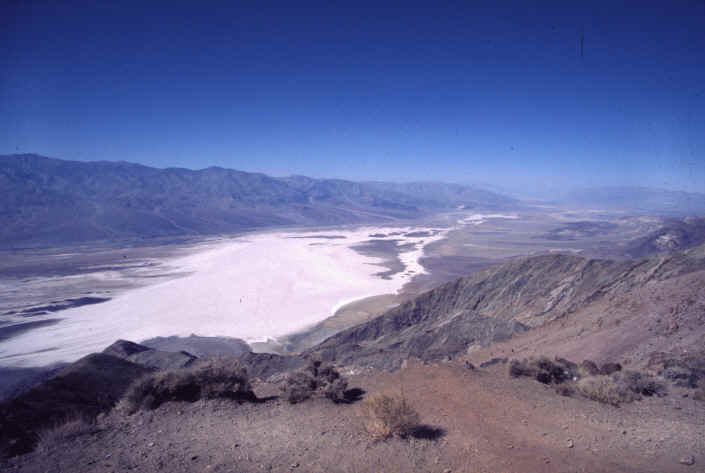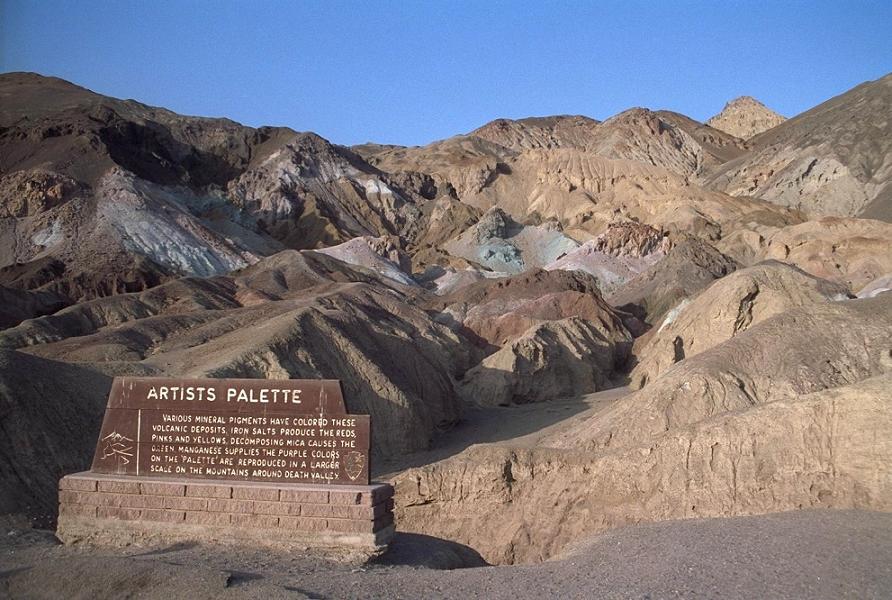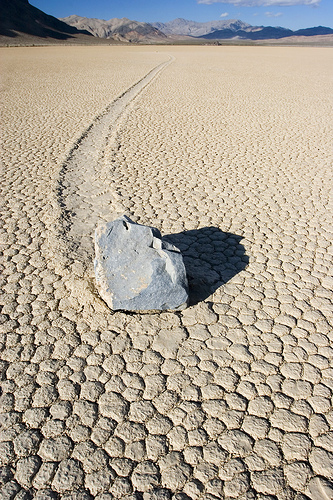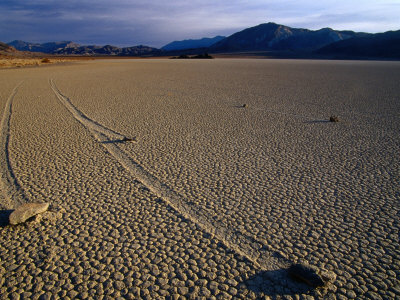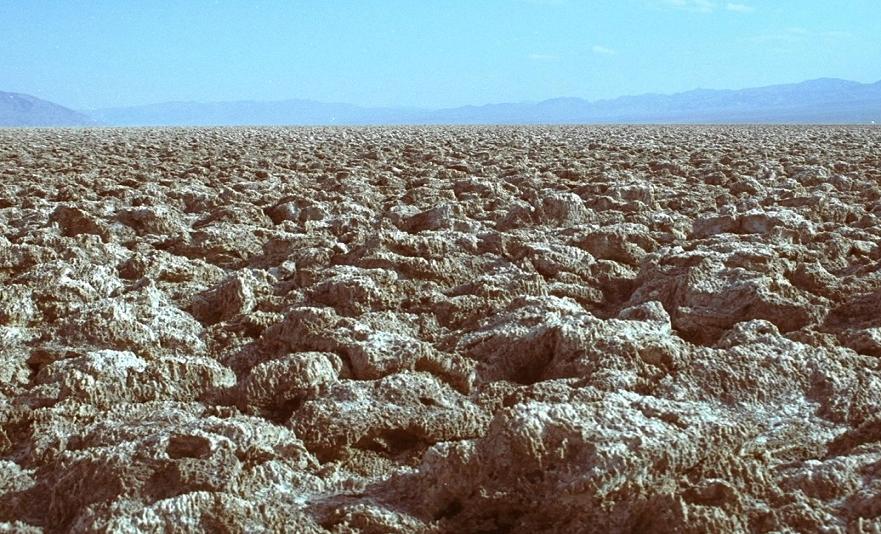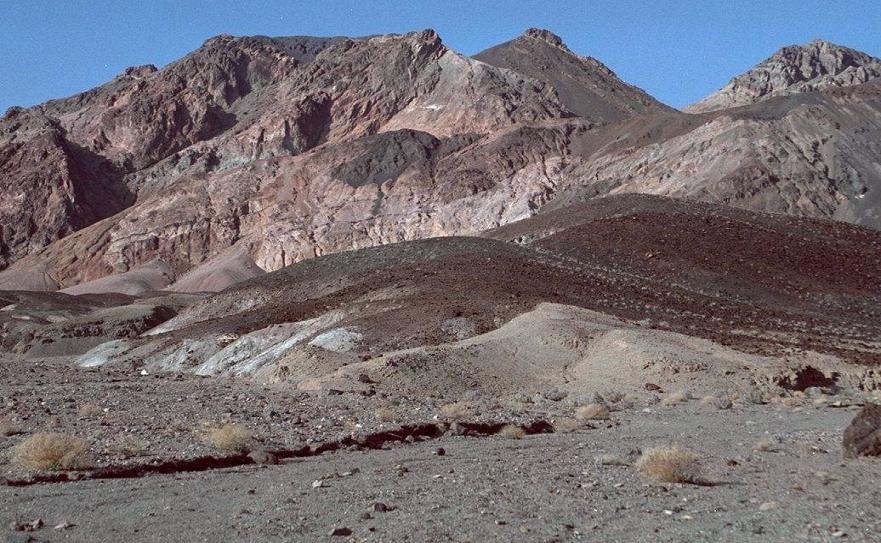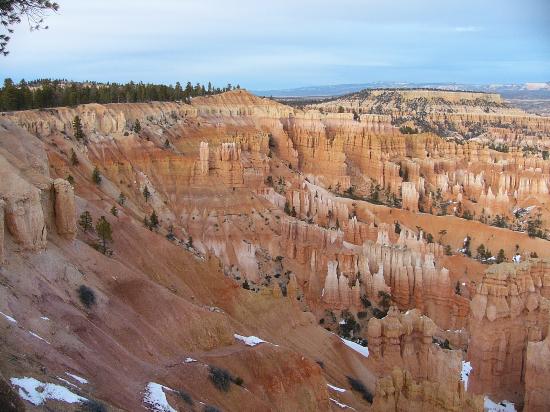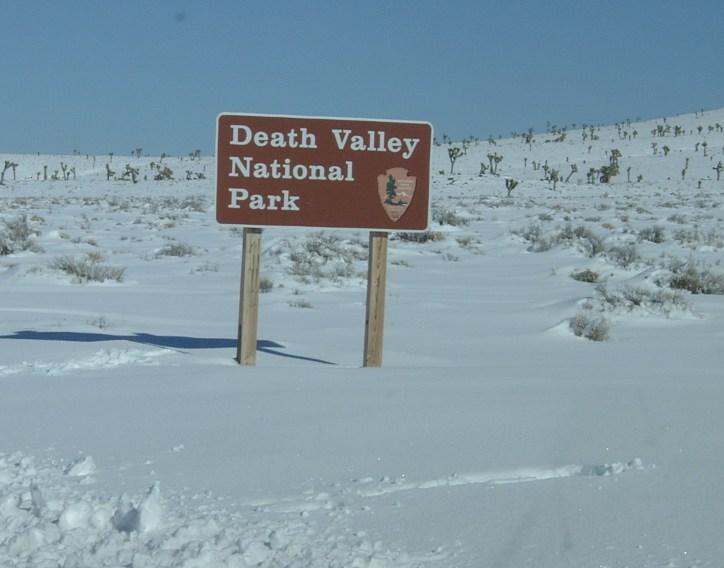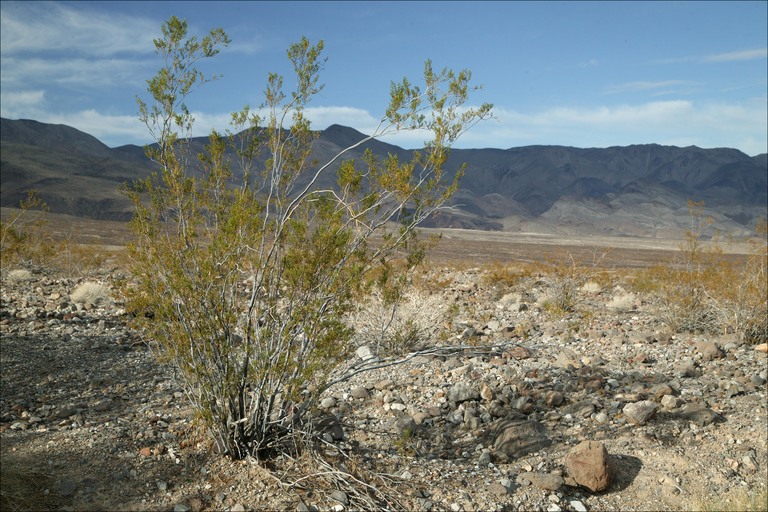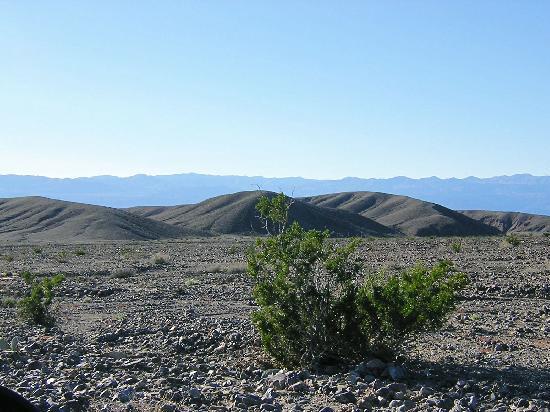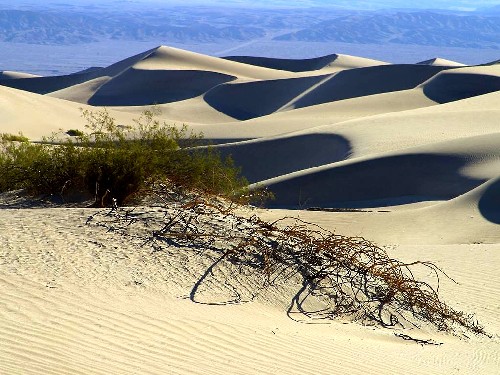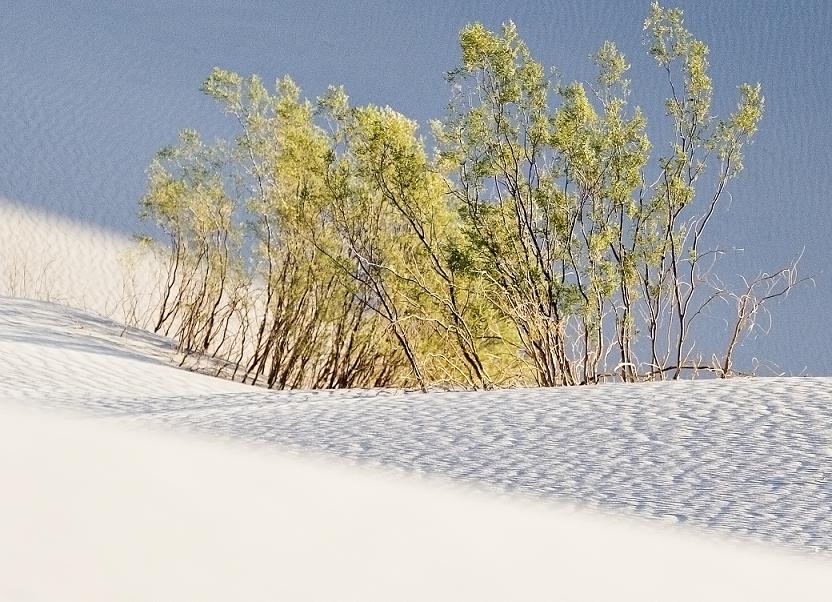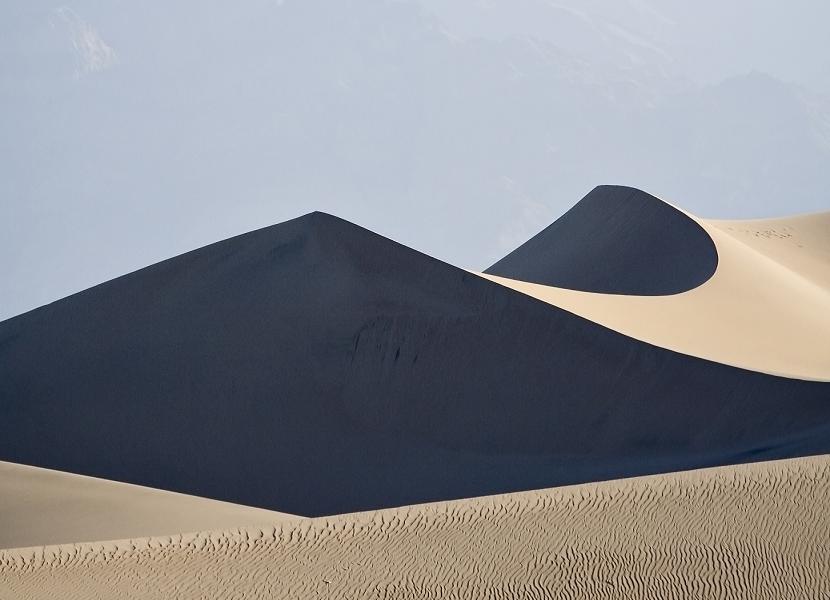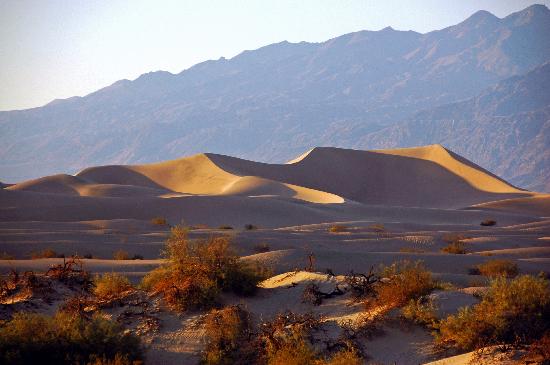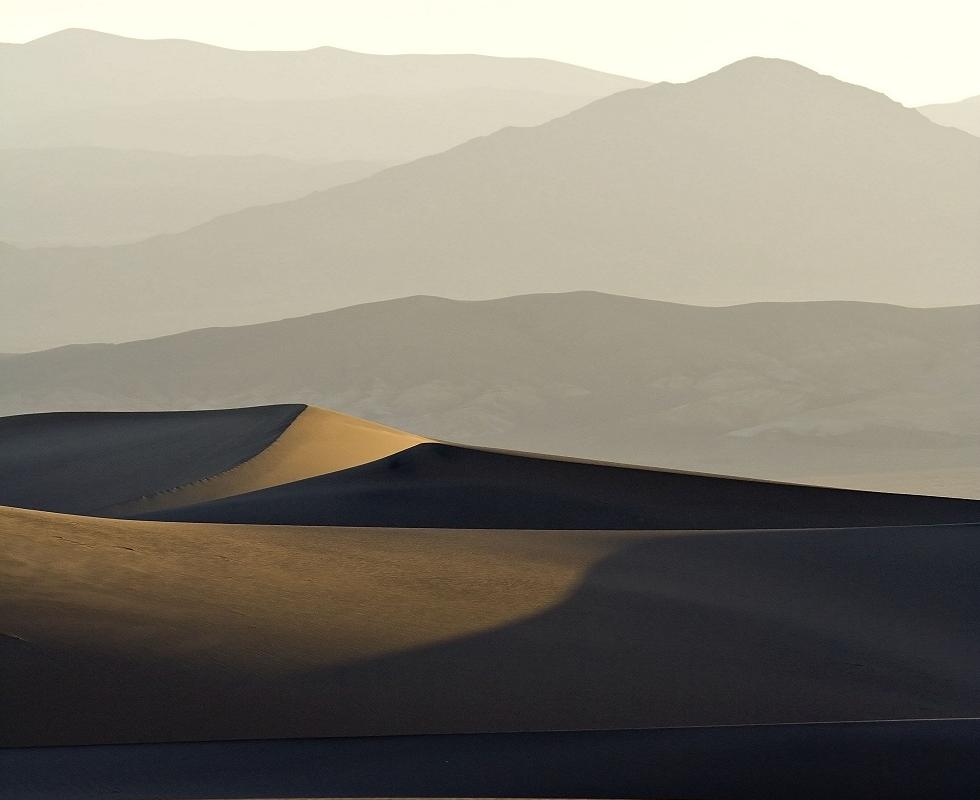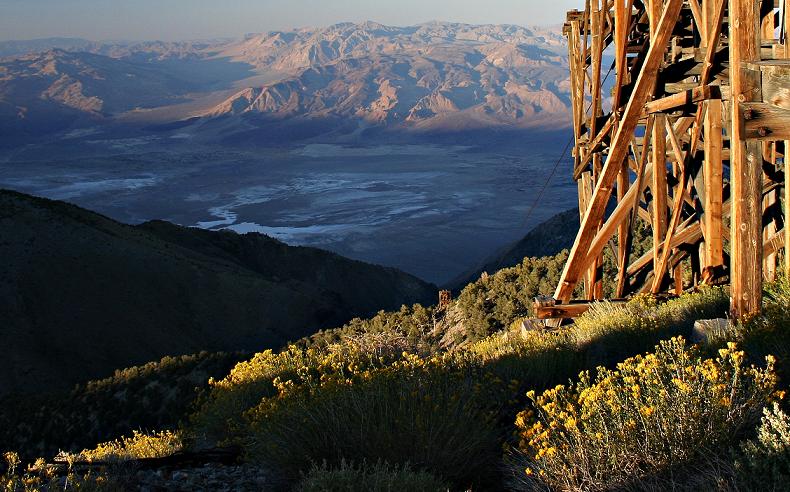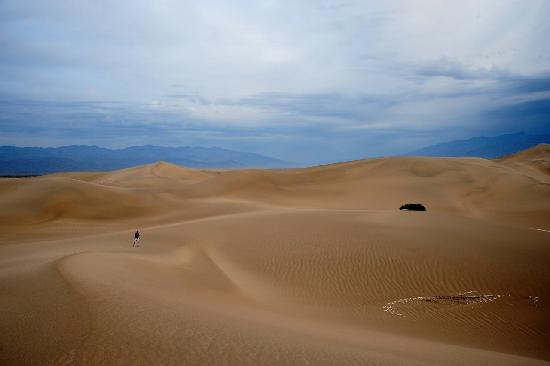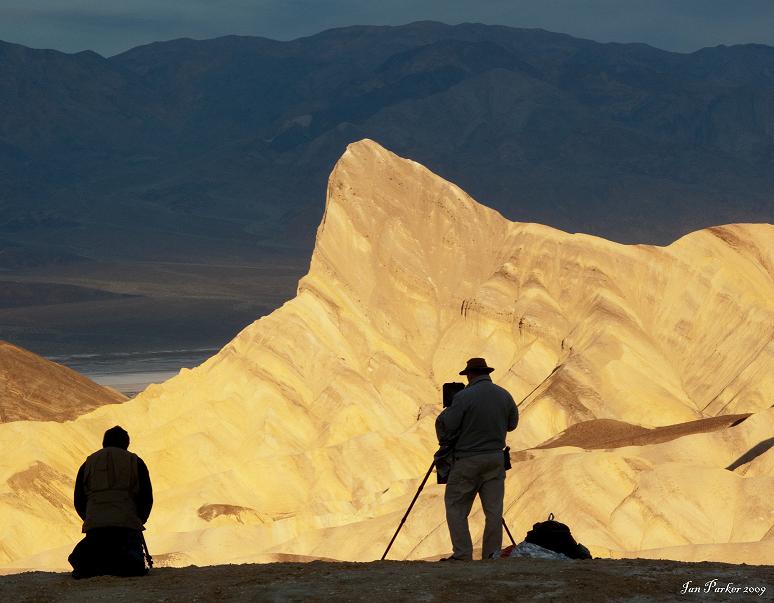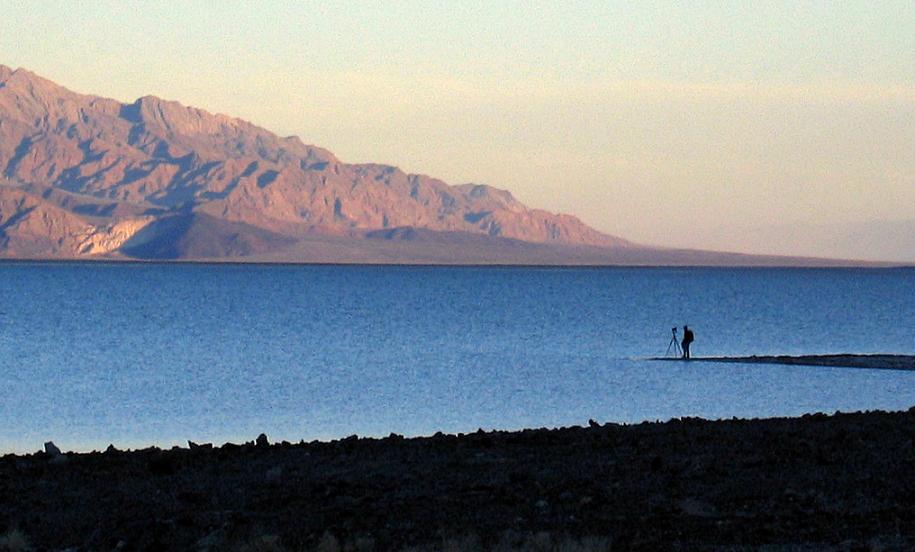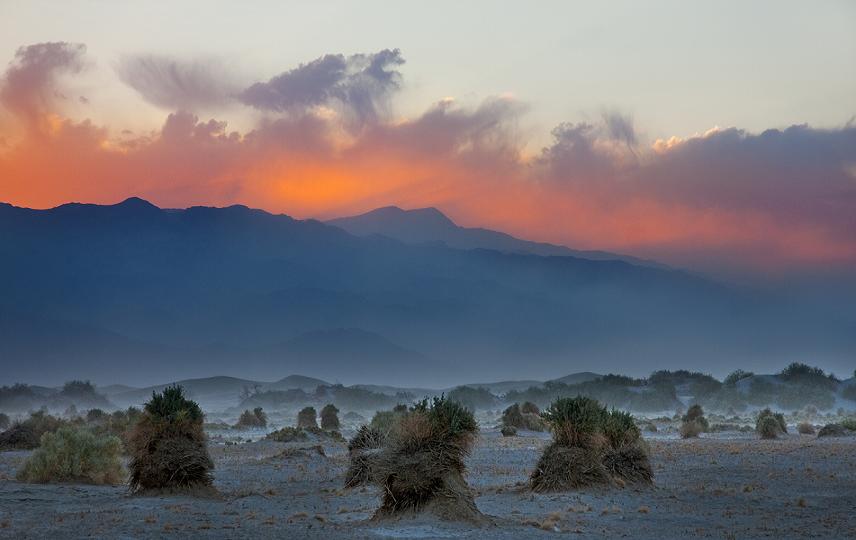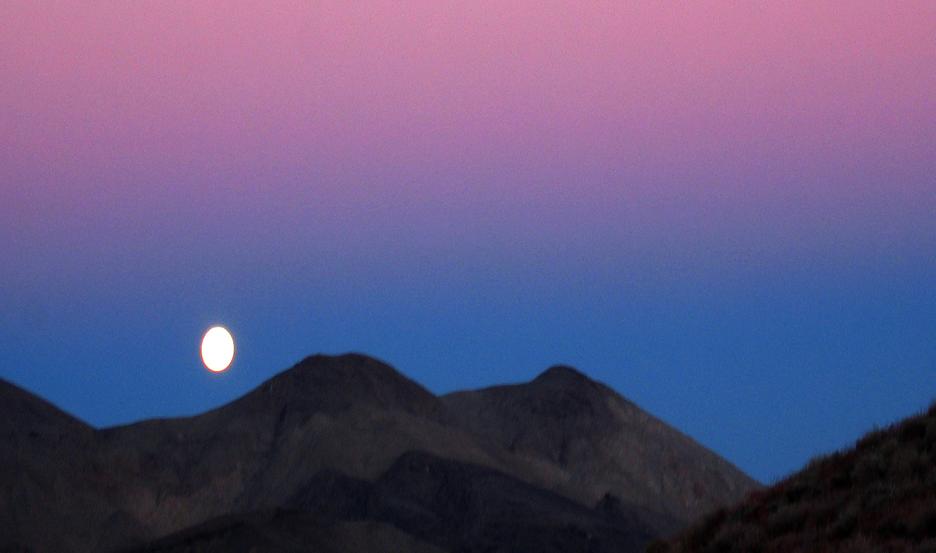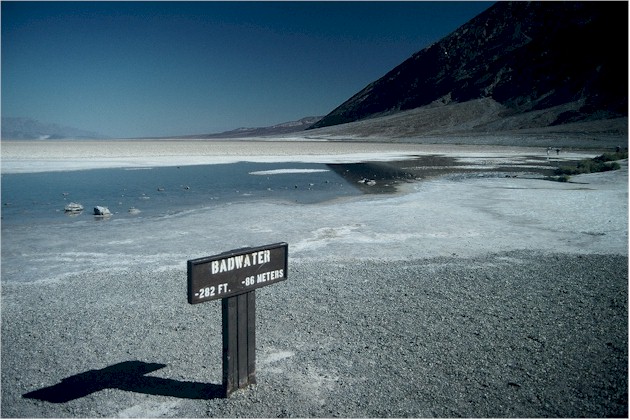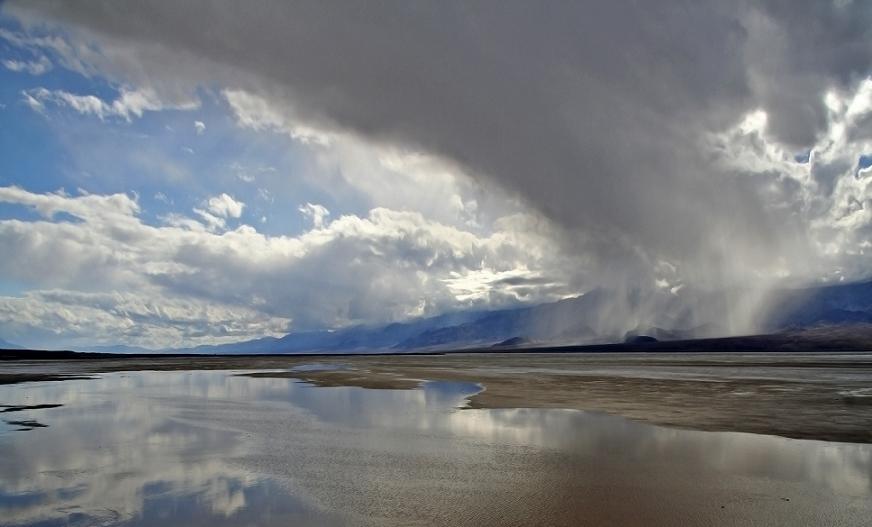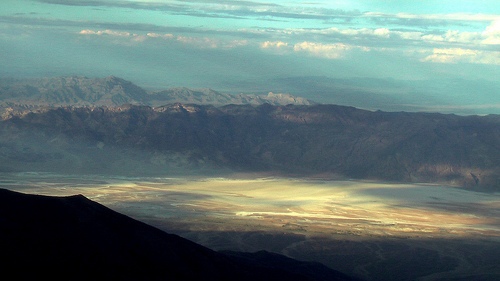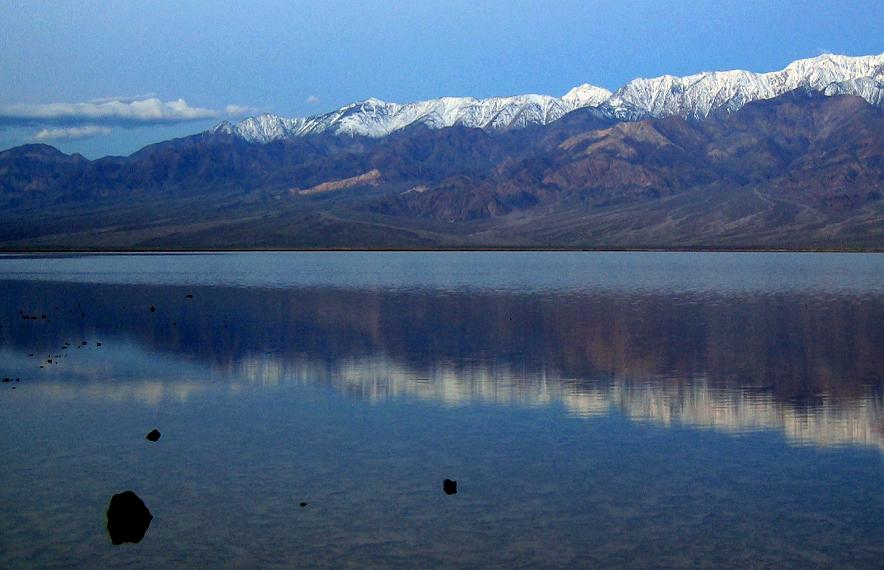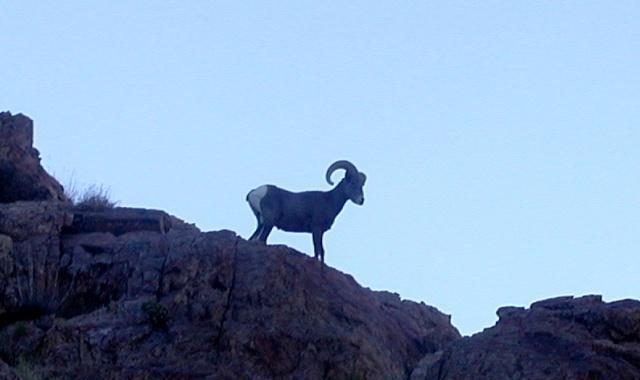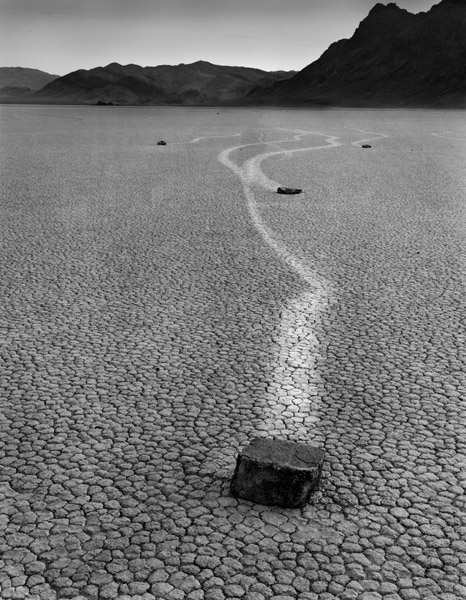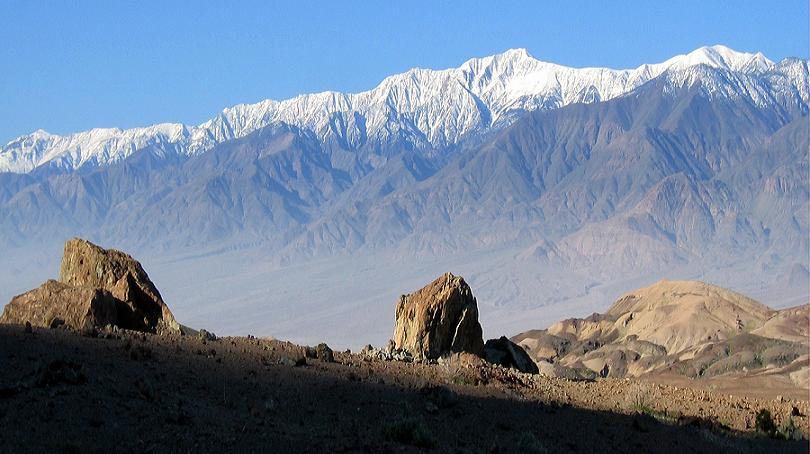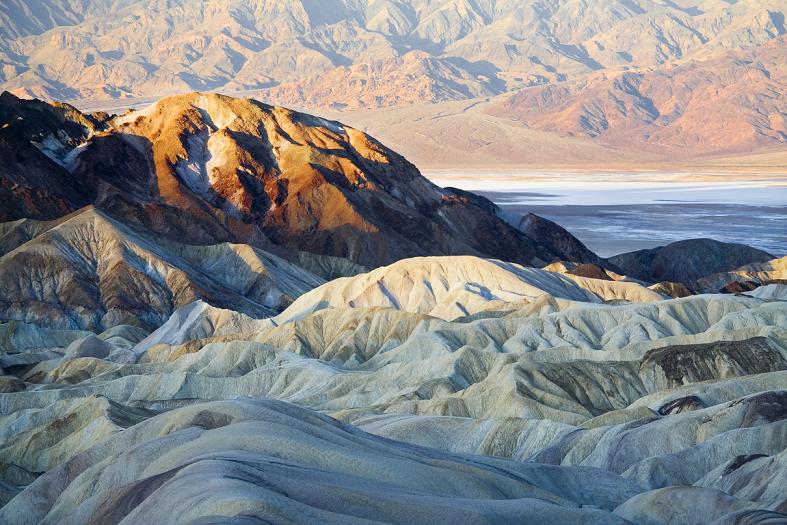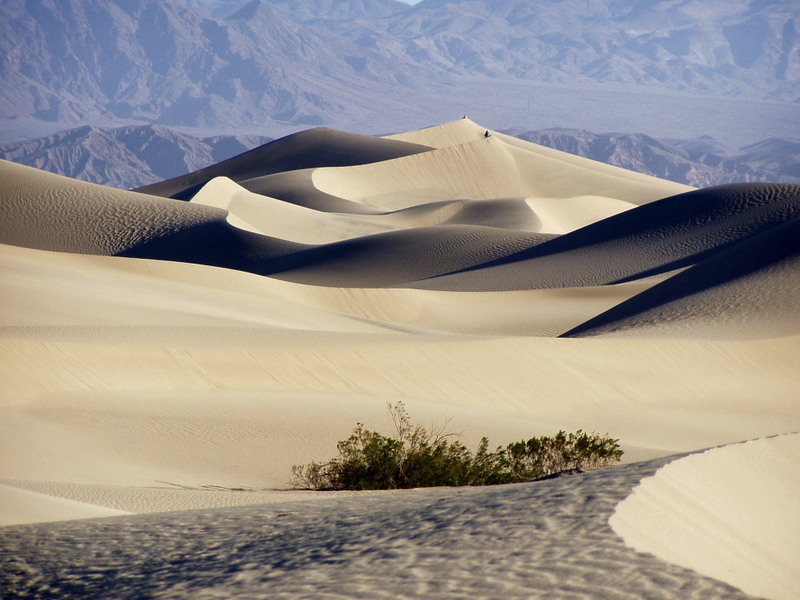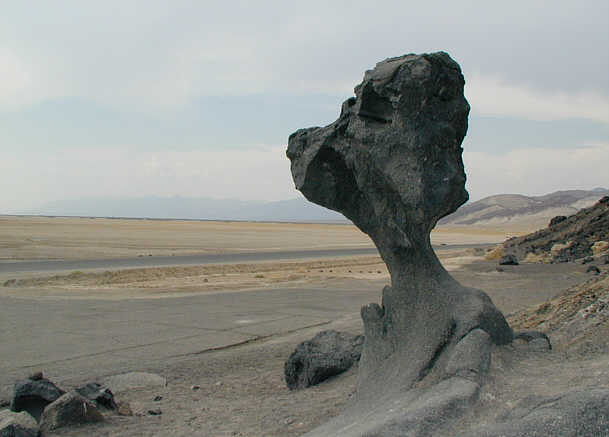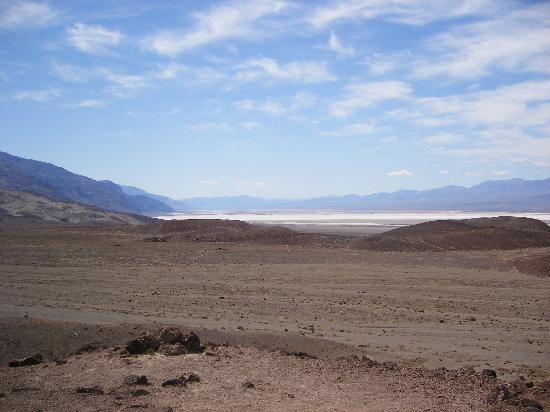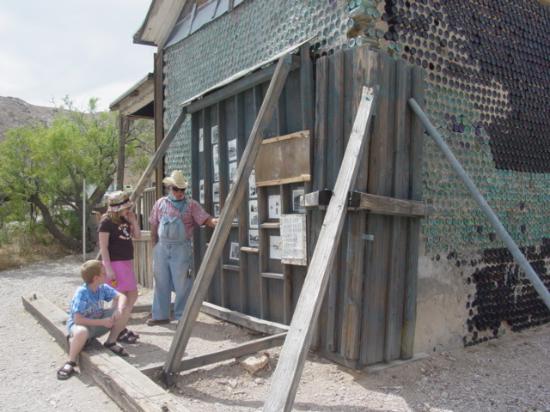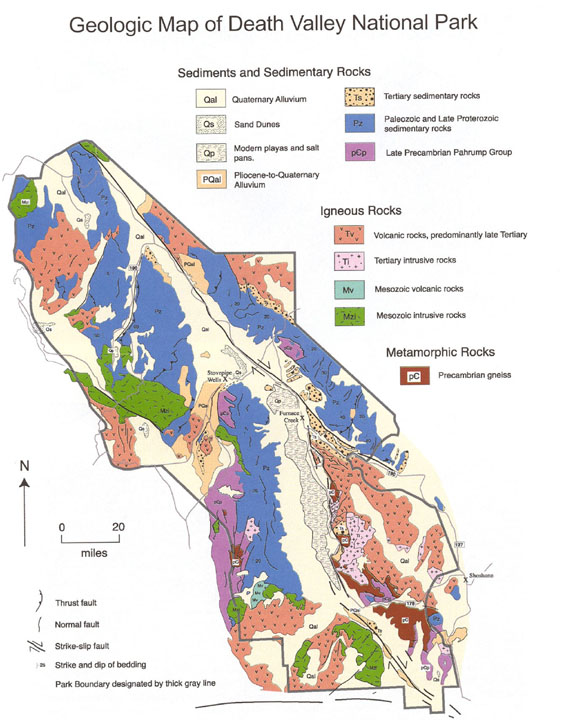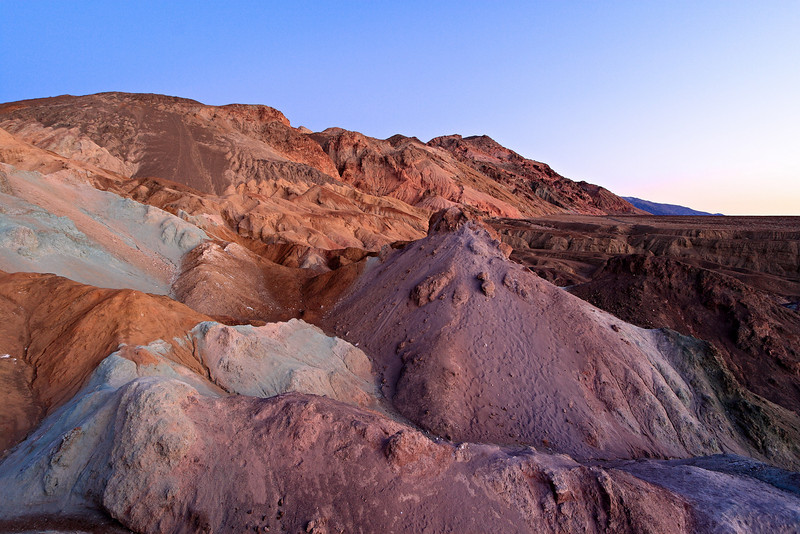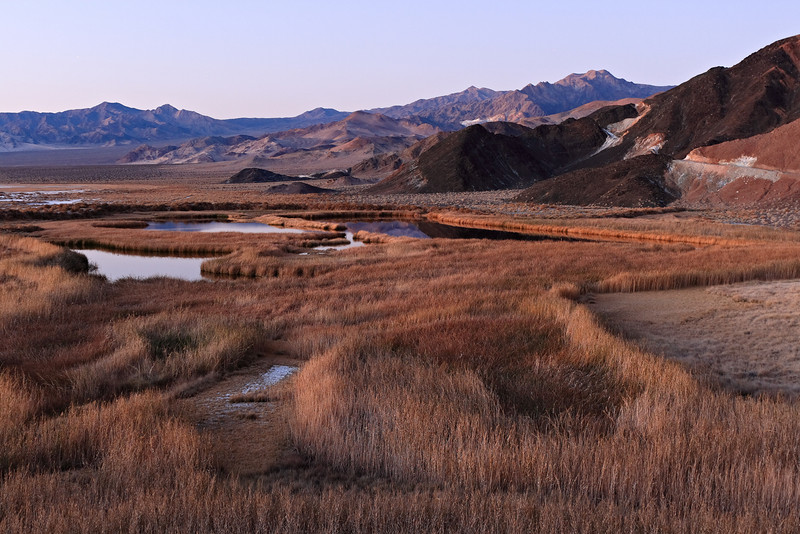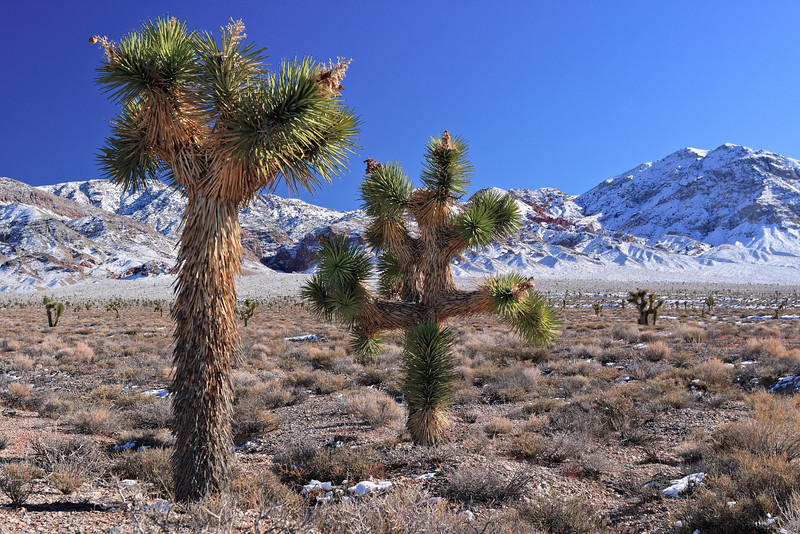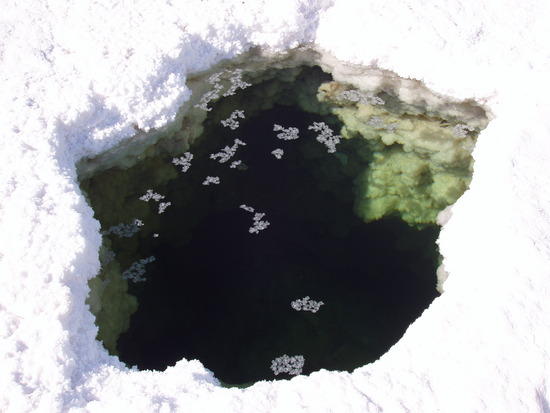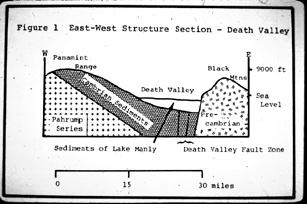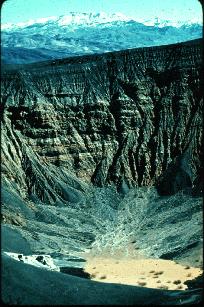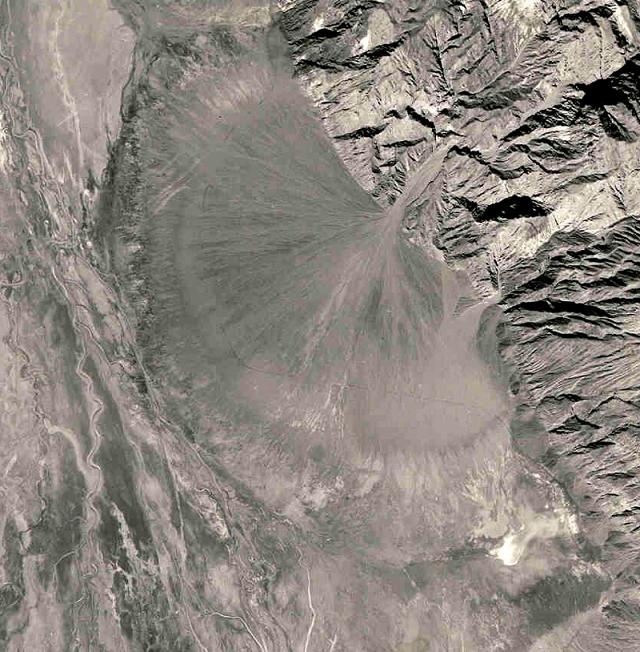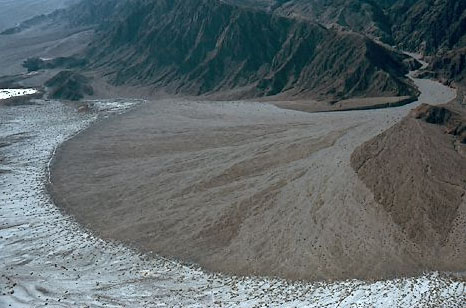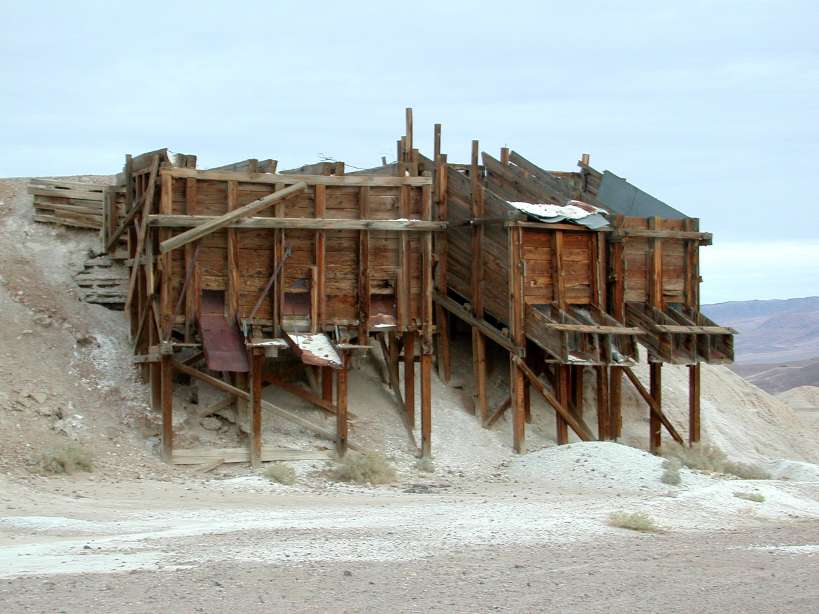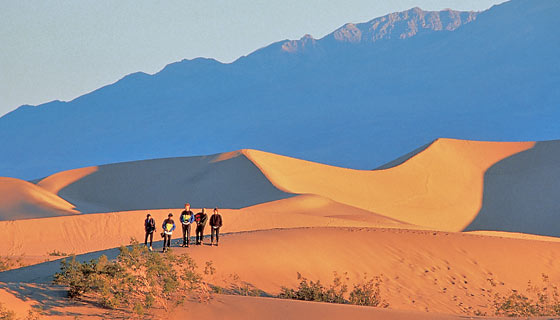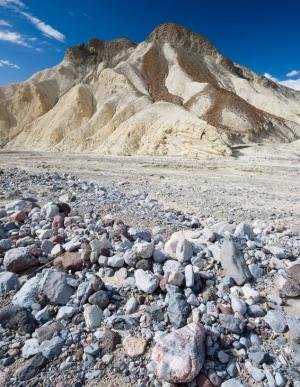 | Death Valley |
|
|
|
|
|
|
|
|
|
|
|
|
|
|
|
|
|
|
|
|
|
|
Zabriskie Point |
|
|
|
|
|
|
|
|
|
|
Moving rocks on Racetrack Playa |
|
Zabriskie Point |
|
|
|
|
|
Geology - http://eesc.columbia.edu/courses/v1010/ |
|
|
|
|
|
Geologic cross-section of Death Valley |
Evaporite formation on the playa lakes |
The Ubehebe crater - http://www.science.smith.edu/departments/Geology/dv/dv.html |
|
Fans have been classified into two basic types by Schumm (1977). Dry fans are those created under ephemeral flow conditions in arid regions while Wet fans are formed by perrenial streams |
Tecopa - talk |
|
a Death Valley Streem |
Mysterious Mother Nature
What causes these rocks to move? Is it global warming? Well, yes, in a way. Most of the valleys in the Nevada and California Basin and Range Province contained large lakes filled with water from melting glaciers covering the surrounding mountains during the last Ice Age. This is known as The Wisconsin Ice Age in North America and the Wurm Ice Age in Europe. (Search this blog for Lake Lahontan, for more information.)
One question is "how did the rocks get out onto the lake beds in the first place?" They probably rolled down the mountainsides due to natural erosional processes and came to rest on floating lake ice. When the floating ice melted and moved during the spring or summers, the rocks would sink to the bottom.
Now, what causes them to move? From personal experience I know that when the clay on the surface of these dry lake beds gets wet, like after a rainstorm, the clay becomes incredibly slippery. The best guess is when these slick, low-friction conditions are combined with high winds, the rocks slide across the surface, leaving these tell-tale tracks. Why hasn''t anyone seen them move? You can not get out on the lake beds when they are wet. So in a way, these mysterious tracks are "caused" by global warming.
Peter
Someone sent this to me...
Subject: ANYONE HAVE AN ANSWER FOR THIS PHENOMENA????
MOVING ROCKS Thought this was a joke, googled it and found
"smithsonian study of moving rocks of death valley" says it is true........ http://mmmgroup.altervista.org/e-rocks.html
The moving rocks, also known as sliding rocks or sailing stones, are a geological phenomenon found in Racetrack Playa, a seasonally dry lake (a playa) located in the Panamint Mountains in Death Valley National Park , California . The rocks move across the surface of the playa, leaving long tracks behind them as they go, without human or an imal intervention. They have never been seen or filmed in motion.
Racetrack rocks only move once every two or three years and most tracks last for just three or four years. Rocks with rough bottoms leave straight striated tracks while those with smooth bottoms wander.Most of the moving stones originate from an 850 foot (260 m) high hillside made of dark dolomite on the south end of the playa, but some are intrusive igneous rock from adjacent slopes. Tracks are often tens to hundreds of feet (low to high tens of meters) long, a few to 12 inches (8 to 30 cm) wide, and typically less than an inch (2.5 cm) deep.
